PDF chapter test TRY NOW
The author of the story is Rabindranath Tagore. He had returned to India after his second trip to England. He went to a small river-side village known as Chandernagore in West Bengal, where his brother Jyotirindra and his wife stayed. He went to spend some days with them.
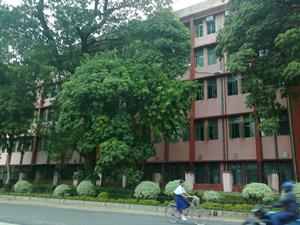
*Chandernagore - a beautiful green village in West Bengal!
He loved the Ganges river that flowed in the area. He was reminded of his days and nights that he spent in the place, which was so extraordinary that he could not describe with words. Those days were relaxed and happy, yet sad with an intense desire. He was used to hearing the sad, continuous murmuring of the river water while he enjoyed the cool shade of the banks filled with trees. The fully lit up Bengal sky, the southern breeze, the flowing of the river, the comfortable laziness, a lot of free time to spend, doing all activities from the ground to the sky (the line at which the earth's surface and the sky appear to meet) - all these were so important to him, like food to a hungry man and water to a thirsty man. He felt this nature was his home, and he was able to feel the care and assistance of a Mother.
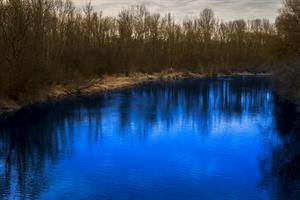
The plaintive babbling of the river made him feel at home!
It had not been many years ago, but still, many changes had happened. The small nests (can also refer to houses, along the banks) in the river-side trees surrounded by the lush greenery, had been changed. Mills had come up in those places, like a huge dragon, with heads (maybe the chimneys from the mills) that made sharp noises and emitted black smoke.
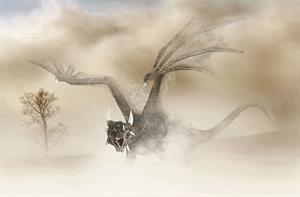
The mills seemed like dragons to him!
The hours of midday sleep (nap) had been reduced due to modern life struggles, and the multi-faceted problems, which leads to disturbances in every part of our life. There can be some good in the modern technological advancements, the author says, but he cannot agree that it is completely for good - there are ill effects of modernization also.
The memories of his beautiful days at the river-side passed by him like how lotus flowers floated in the holy rivers.
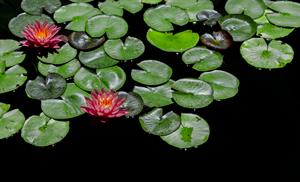
His days passed like lotus blossoms floated down a sacred stream!
Sometimes, during rainy afternoons in his maddening enjoyment, he used to sing old Vaishnava songs (sacred songs of Hindus) with his tunes, while also playing the harmonium. Sometimes, he slowly floated along in a boat with his brother Jyotirindra singing songs, while his brother played the violin. They played the Hindustani Raag called "Puravi", which is usually sung during sunset time. As time passed, they moved to the Raag called "Behaga", which is usually sung during the second quarter of night (9 pm-midnight). They spent their evenings in the lap of nature, drifting along on boats, and singing various raagas. They finally saw the sky close down to the night and the rise of the moon clearly over the beautiful edges of trees, that seemed ornamentally lit up with the rise of the moon.
Then they rowed back to their villa. They sat on a warm bed arranged on their terrace, with a view of the river. By then the land and water had both calmed down - there were no boats seen, the edges of the trees looked calm in its shadows. The moonlight reflected and shone like silver in the smooth flowing river.
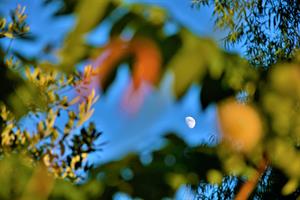
The moonlight shone on the trees, making it look like fringes!
Their villa was known as the "Moran's Garden". A series of steps made of rectangular blocks of stone led from the river bed to the long verandah, that formed the front part of the house.
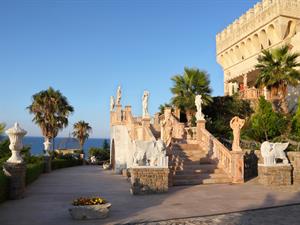
A flight of stone-flagged steps led up from the water to a long, broad verandah!
The rooms were not on the same floor, to reach some rooms, one had to climb a short series of steps. The big hall had a view of the steps and was decorated with coloured glass windows with pictures.
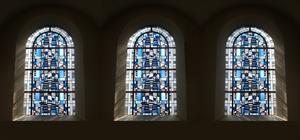
Stained glass windows in the villa!
Out of the colourful pictures, one picture was of a swing hanging from a tree branch, hidden inside the thick leaves of the trees. In the pleasant shade of the tree, two persons were playing in the swing, and multicoloured lights reflected on them.
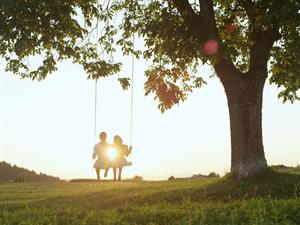
One of the pictures was of a swing with two persons glowing in the checkered light!
There was another broad series of steps that led to the palace, which looked like a castle. Many people were moving about in fancy clothes. When sunlight fell on the stained glass windows, the pictures shone beautifully, which seemed to fill the place with pleasant music. There seemed to be a festive atmosphere of a long-awaited celebration, and all expressed through the light. The author's imagination is at his best when it comes to describing the atmosphere of the place. The swinging couple on the picture and their love story all seemed to come alive, in the banks of the river-side.
The topmost room of the house was in a round tower which had windows on all sides. This was the room used by the author for writing poetry. He could not see anything from there except the top parts of trees and the sky. He was busy with writing Evening Songs, and he also wrote a poem about the room:
"There, where in the breast of limitless space clouds are laid to sleep, I have built my house for thee, O Poesy!"
He says in the lines that he had built his house in the midst of a huge space without any boundaries, where even clouds stop to sleep - only for the sake of poetry.
Reference:
*Chandernagore Image courtesy - https://commons.wikimedia.org/wiki/File:Chandernagre_Govt._College.jpg
